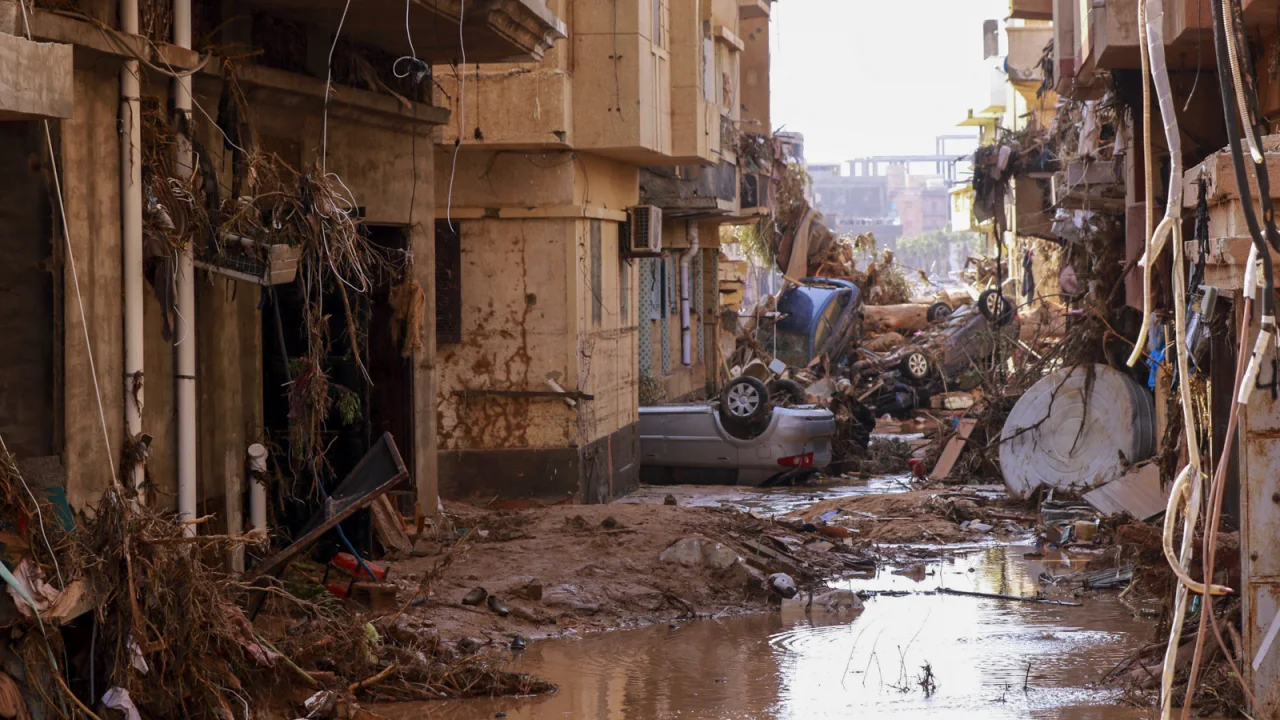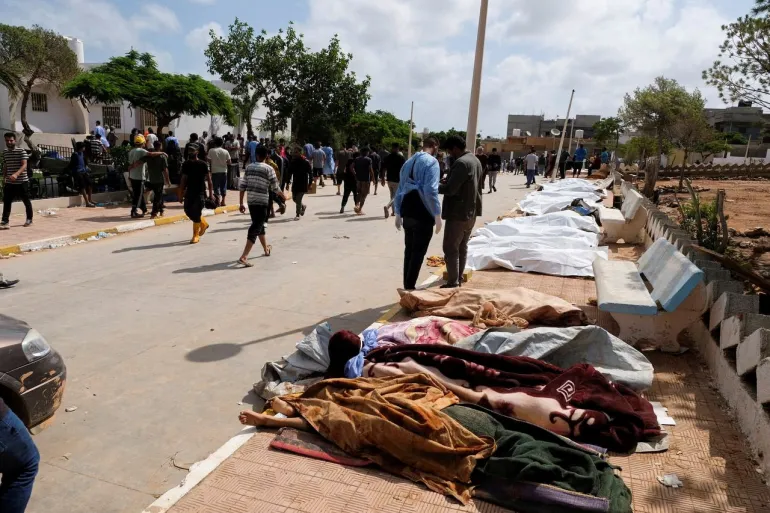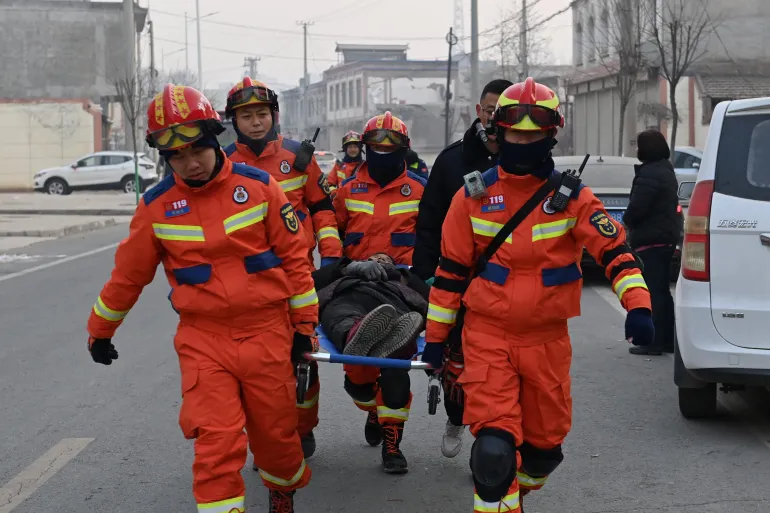The Libyan Interior Ministry says that at least 5,300 people are dead. The International Federation of Red Cross and Red Crescent Societies says that at least 10,000 people are missing. The health minister in Libya’s eastern administration says that as many as 6,000 people are missing in Derna.
- Heavy rains caused two dams to collapse in northeastern Libya, resulting in catastrophic flooding.
- At least 5,300 people are feared dead and 10,000 are missing.
- The floods have also caused widespread damage to infrastructure, including homes, roads, and bridges.
- The Libyan government has declared a state of emergency and is appealing for international aid.
- The floods are the latest in a series of extreme weather events that have hit Libya in recent years.
- The country’s vulnerability to climate change is exacerbated by its ongoing political conflict.
- The international community must come together to help Libya recover from this disaster.
In a devastating turn of events, northeastern Libya has been plunged into chaos and despair due to heavy rainfall. This natural disaster has resulted in the loss of over 5,000 lives, with an additional 10,000 individuals still unaccounted for. To compound the tragedy, the collapse of two dams has unleashed torrents of water into areas already submerged. Tamer Ramadan, who leads the International Federation of Red Cross and Red Crescent Societies delegation in Libya, revealed these harrowing statistics during a press briefing in Geneva, Switzerland. The situation has been described as nothing short of a significant catastrophe.
Uncertain Numbers:
The interior ministry of Libya’s eastern government has officially reported a death toll of at least 5,300. However, it’s crucial to note that these numbers have not been independently verified by reputable sources such as CNN. The count of those missing remains uncertain, adding to the distress of families and communities grappling with the aftermath of this disaster.
International Impact:
This tragedy has transcended national borders, claiming the lives of at least 145 Egyptian citizens, according to officials in the northeastern Libyan city of Tobruk. The international community stands in solidarity with those affected by this catastrophe, extending support and assistance to those in dire need.
Destruction in Derna:
Derna, one of the hardest-hit areas, faces an arduous path to recovery. Approximately 6,000 residents are still missing, and the city itself has been left in ruins. Othman Abduljalil, the health minister in Libya’s eastern administration, visited Derna and referred to the situation as “catastrophic” during his recent tour. Authorities are deeply concerned that entire neighborhoods may have been swept away by the overwhelming floodwaters.
Heartbreaking Stories:
Libya: Ferocious Weather
The relentless rainfall that has swept across several Libyan cities in the northeast is attributed to a powerful low-pressure system, which originated as a devastating flood in Greece before evolving into a tropical-like cyclone known as a “medicane.” This catastrophic event unfolds against the backdrop of an unprecedented year of climate disasters and record-breaking weather extremes, from wildfires to oppressive heat. Scientists emphasize that rising ocean temperatures, linked to climate change, are contributing to the intensity of such storms.
Challenges Amid Conflict:
Libya’s vulnerability to extreme weather is further exacerbated by its long-standing political conflict. For over a decade, the nation has grappled with a power struggle between two rival administrations: the UN-backed Government of National Unity (GNU) in Tripoli and the eastern-based Libyan National Army (LNA) under the command of Khalifa Haftar. Derna, situated under Haftar’s control, has borne the brunt of this disaster. The complex political landscape poses challenges for disaster management, rescue operations, and infrastructure maintenance.
Collapse of Dams:
The collapse of two dams, leading to a rush of water towards Derna, has caused catastrophic damage. According to Ahmed Mismari, spokesperson for the LNA, three bridges were destroyed, and entire neighborhoods were swept away, ultimately ending up in the sea. Homes in valleys were carried away by powerful muddy currents, along with vehicles and debris, complicating rescue efforts. Phone lines in the city remain down, further hindering response efforts.
Unprecedented Flooding:
The scale of this storm makes it one of the deadliest on record in North Africa. Libya is confronting an “unprecedented” situation, as reported by Hamad, the head of the eastern administration. Multiple cities, including Al-Bayda, Al-Marj, Tobruk, Takenis, Al-Bayada, and Battah, have been affected, along with the eastern coast up to Benghazi. The devastating impact of the floods is exemplified by the loss of at least 37 residential buildings swept into the seas.
In these trying times, our hearts go out to the people of Libya, especially those who have lost loved ones and those awaiting news of their missing family members. The road to recovery will be long and challenging, but the international community stands ready to support Libya in this hour of need.





